13 Gorgeous Shrubs Ideal For Shaded Gardens
If you’re looking to brighten up a shaded garden, selecting the right shrubs can make all the difference. Many beautiful shrubs thrive in low-light conditions, offering vibrant foliage and stunning blooms that can transform your outdoor space. From evergreen beauties to colorful spring blooms, these plants are perfect for creating a lush, thriving garden even in areas with minimal sunlight. Explore these options to find the best choices for adding both beauty and structure to your shaded garden.
This post may contain affiliate links, which helps keep this content free. Please read our disclosure for more info.
Azalea (Rhododendron spp.)
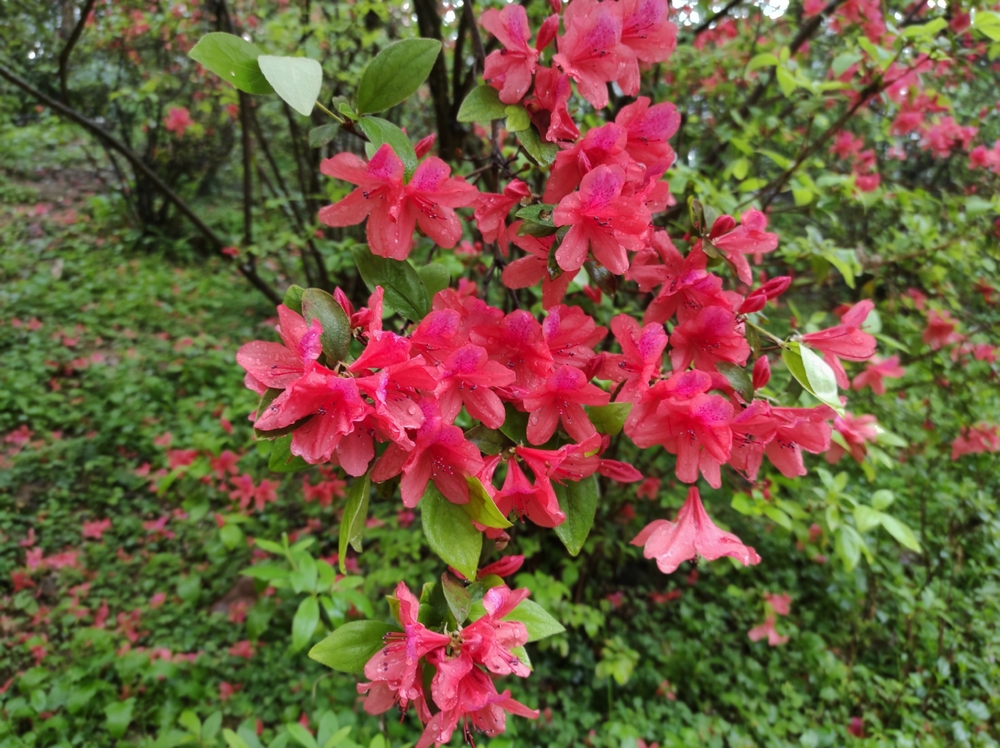
Azaleas are among the most popular choices for shaded gardens due to their ability to thrive in partial to full shade. Their vibrant flowers come in a wide range of colors, such as pink, white, purple, and red, which bloom in spring, brightening up shaded areas. These shrubs have glossy, dark green leaves that provide a stunning contrast to the delicate flowers, adding interest even when they are not in bloom. Azaleas are also relatively low-maintenance and tolerate a variety of soil types, though they prefer slightly acidic soil.
These shrubs are well-suited for creating a colorful and textured garden. Their compact size makes them perfect for borders or as foundation plantings, and they pair wonderfully with other shade-loving plants. Azaleas provide year-round interest with their lush foliage and dramatic blooms, making them a must-have in any shaded garden.
Hydrangea (Hydrangea macrophylla)
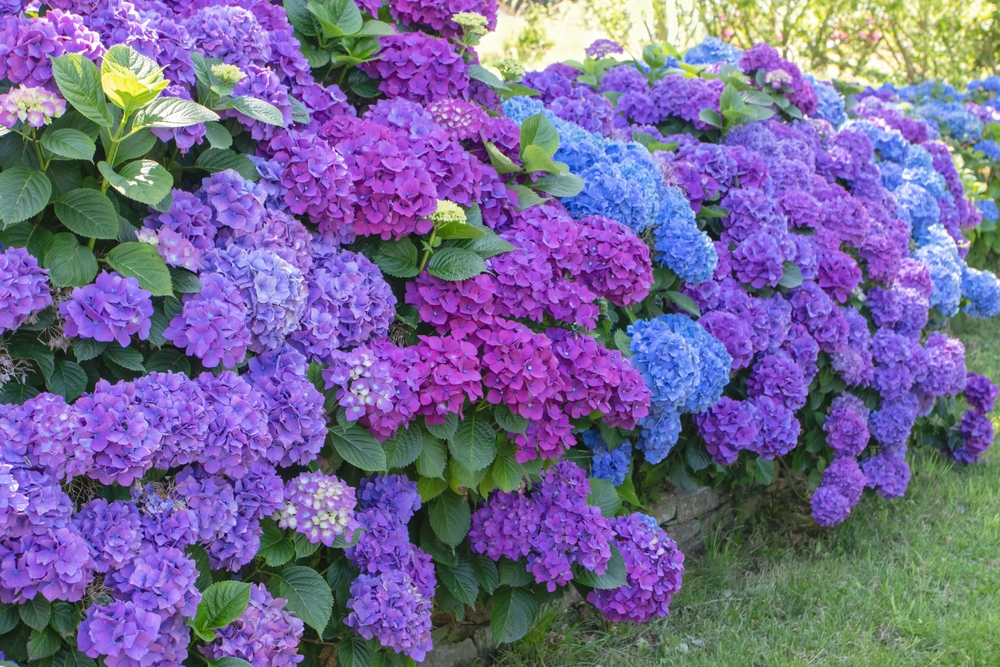
Hydrangeas are a timeless favorite for shaded gardens, with their large, globe-like clusters of flowers that come in an array of colors, including blue, pink, and white. They perform best in partial shade, where they can flourish without the risk of sunburn or drying out. In addition to their stunning blooms, hydrangeas have large, dark green leaves that provide a lush backdrop, making them a great option for filling in empty garden spaces.
These shrubs are excellent for creating a soft, romantic atmosphere in shaded corners of the garden. The blooms of hydrangeas are not only visually appealing, but they also attract pollinators like bees and butterflies. With their relatively low maintenance and ability to adapt to various soil types, hydrangeas are perfect for adding beauty and color to shaded landscapes.
Camellia (Camellia japonica)
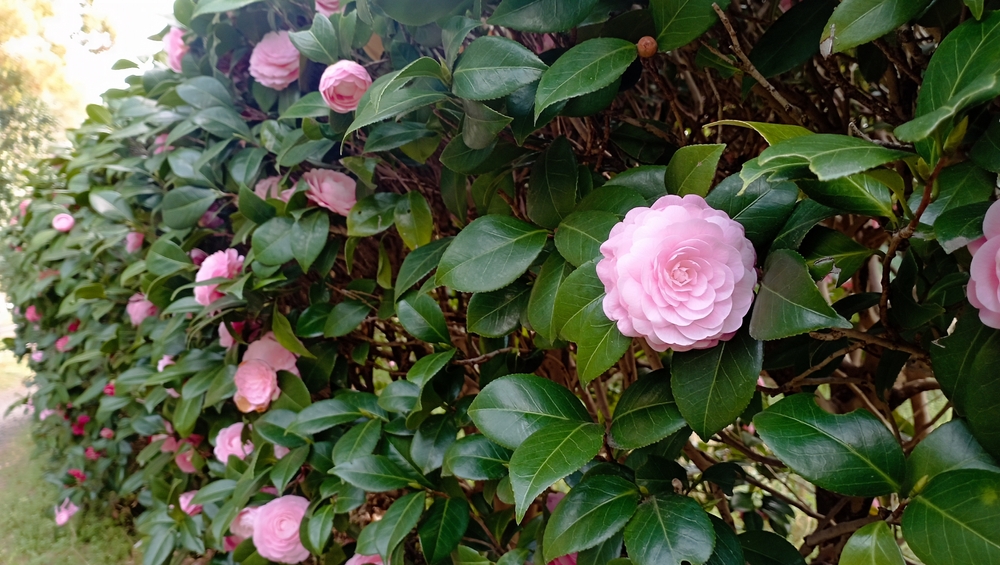
Camellias are prized for their glossy evergreen leaves and beautiful, showy flowers that bloom in shades of pink, red, and white during winter or early spring. They are well-suited for shaded gardens, especially those with acidic, well-drained soil. Camellias thrive in dappled shade or partial shade, where they are protected from harsh midday sun, which can damage their delicate flowers. Their thick, dark green foliage provides an attractive backdrop even when the plants are not in bloom.
In addition to their stunning appearance, camellias are relatively easy to care for. They require minimal pruning and can grow in a variety of conditions, from along fences to under taller trees. Their early blooms bring color to the garden during the cold months, making them an ideal choice for gardeners looking to extend the bloom season in shaded areas.
Pieris (Pieris japonica)
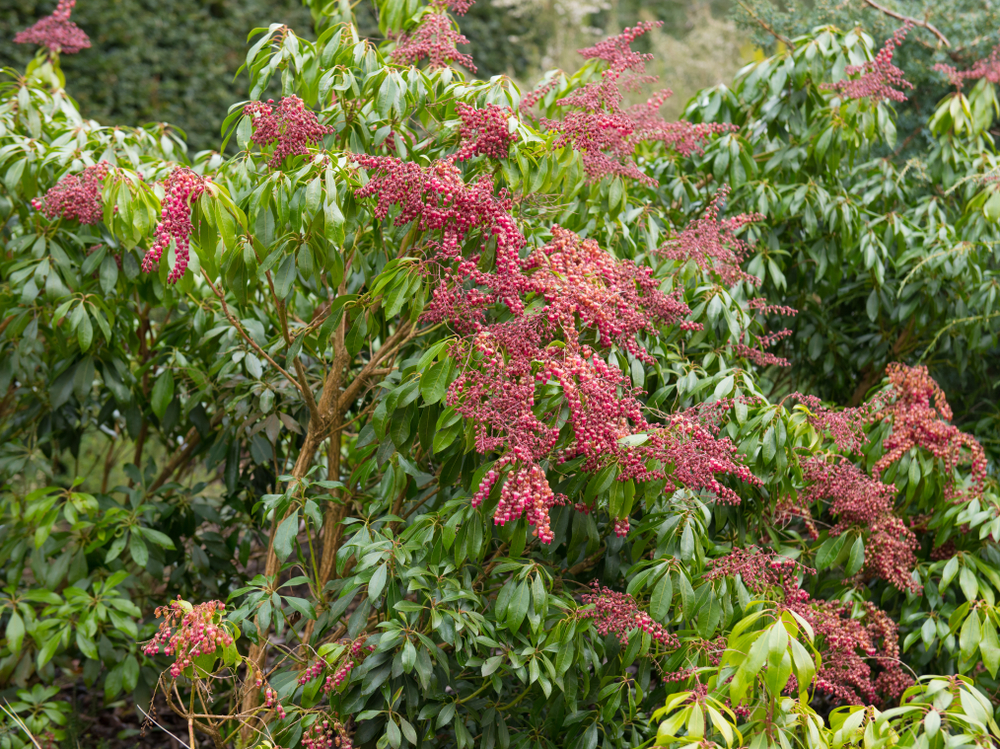
Pieris, or Japanese Andromeda, is an excellent choice for shaded gardens thanks to its vibrant new growth, which can range from red to pink in color. As the plant matures, its leaves turn dark green, and in early spring, it produces clusters of small, bell-shaped flowers that range in color from white to pink. Pieris is a slow-growing shrub that thrives in partial to full shade, making it ideal for areas that receive little direct sunlight. Its evergreen foliage ensures year-round interest, and its blooms provide an additional pop of color when many other plants are still dormant.
The striking foliage of Pieris makes it a standout feature in any shaded garden. This shrub grows well in acidic, well-drained soils, making it perfect for woodland gardens or areas with natural shade. Pieris also works well as a hedge or specimen plant and pairs nicely with other shade-loving plants, adding texture and depth to your garden design.
Fatsia Japonica (Japanese Aralia)
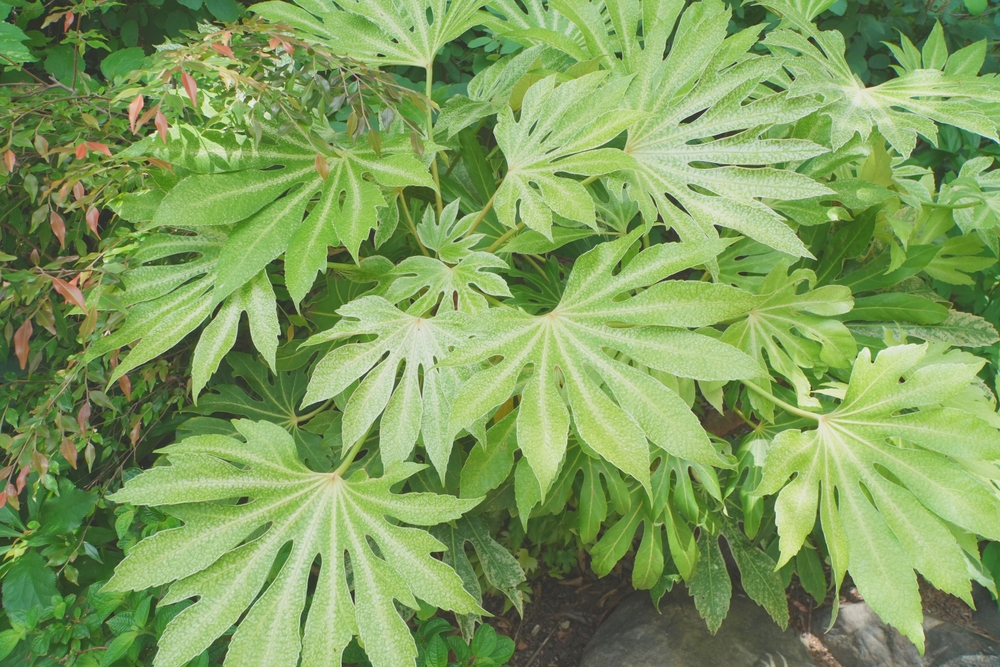
Fatsia Japonica is an evergreen shrub that offers striking, large, glossy leaves, making it an eye-catching addition to shaded gardens. Its bold foliage stands out in dark corners and creates a tropical feel, even in cooler climates. The leaves are deeply lobed, with a shiny, leathery texture that adds visual interest and texture to any shaded area. Fatsia thrives in both partial and full shade, making it a versatile plant for filling in spots where other plants may struggle.
During late autumn, Fatsia produces small, white flowers in large, rounded clusters, though its impressive foliage often overshadows them. This shrub is ideal for creating a lush, green backdrop in your shaded garden. It is also relatively low-maintenance, needing only occasional pruning to keep its shape. Fatsia adds year-round interest and is particularly effective at adding a tropical touch to shaded areas.
Hosta (Hosta spp.)
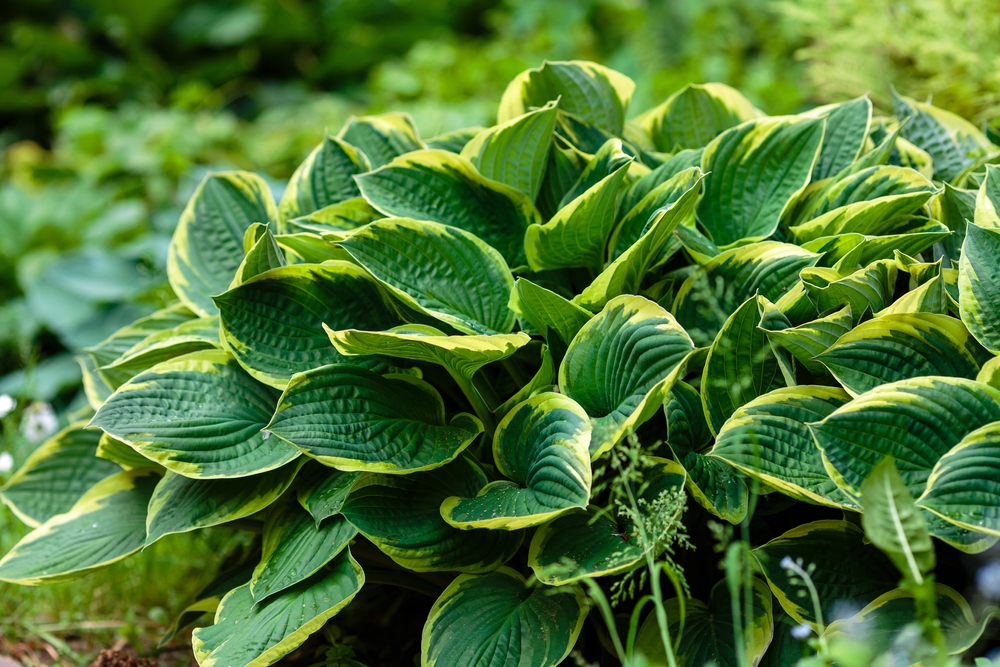
Hostas are widely recognized for their ability to thrive in shaded gardens and are valued for their bold foliage. These shade-loving plants come in a variety of colors, ranging from bright lime green to variegated combinations of white and green. Hostas are perfect for brightening up dark corners or filling in spaces beneath trees where little light reaches. Their broad, textured leaves add a luxurious feel to shaded areas, creating a calming atmosphere.
While hostas are primarily known for their foliage, many varieties also produce lovely flowers, typically in shades of purple or white. These flowers bloom on tall stems above the leaves in mid to late summer, providing additional visual interest. Hostas are incredibly versatile and can grow in a variety of soil types, though they thrive in moist, well-drained conditions. Their low-maintenance nature and striking appearance make them an essential choice for shaded garden designs.
Mahonia (Mahonia spp.)
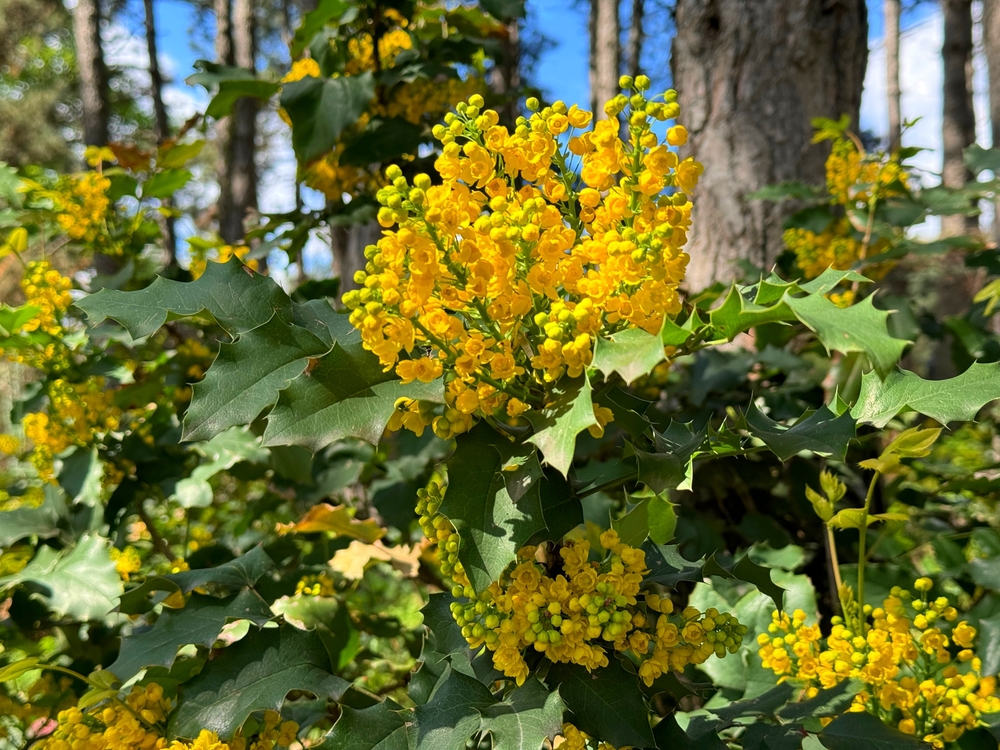
Mahonia, also known as Oregon Grape, is a versatile shrub that thrives in shady gardens. With its spiky, holly-like leaves and bright yellow flowers in late winter to early spring, Mahonia adds color and texture to shaded landscapes. The clusters of flowers are followed by dark blue berries, which provide interest throughout the year. Mahonia grows well in partial to full shade and is perfect for areas with acidic or slightly alkaline soils.
In addition to its colorful blooms, Mahonia has glossy, evergreen leaves that provide structure and year-round interest in the garden. This shrub is ideal for woodland gardens and works well in the background or as a specimen plant. Its low-maintenance requirements and ability to adapt to various soil conditions make it a popular choice for shaded spots.
Japanese Maple (Acer palmatum)

Japanese Maples are known for their elegant, finely cut leaves and vibrant autumn color. They thrive in partial shade, where their delicate foliage remains protected from the harsh midday sun. In spring and summer, the leaves of Japanese Maples range in color from bright green to deep red or purple, adding a beautiful contrast to shaded areas. In autumn, the leaves turn vibrant red, orange, or yellow, providing a stunning display that enhances the seasonal beauty of the garden.
These shrubs are perfect for small, shaded gardens, and they grow well in a variety of soil types as long as the soil remains moist and well-drained. Japanese Maples are slow-growing, which makes them ideal for those looking for a shrub that will develop slowly but provide long-lasting beauty. They work well as a focal point in the garden or as part of a mixed planting.
Winterberry (Ilex verticillata)
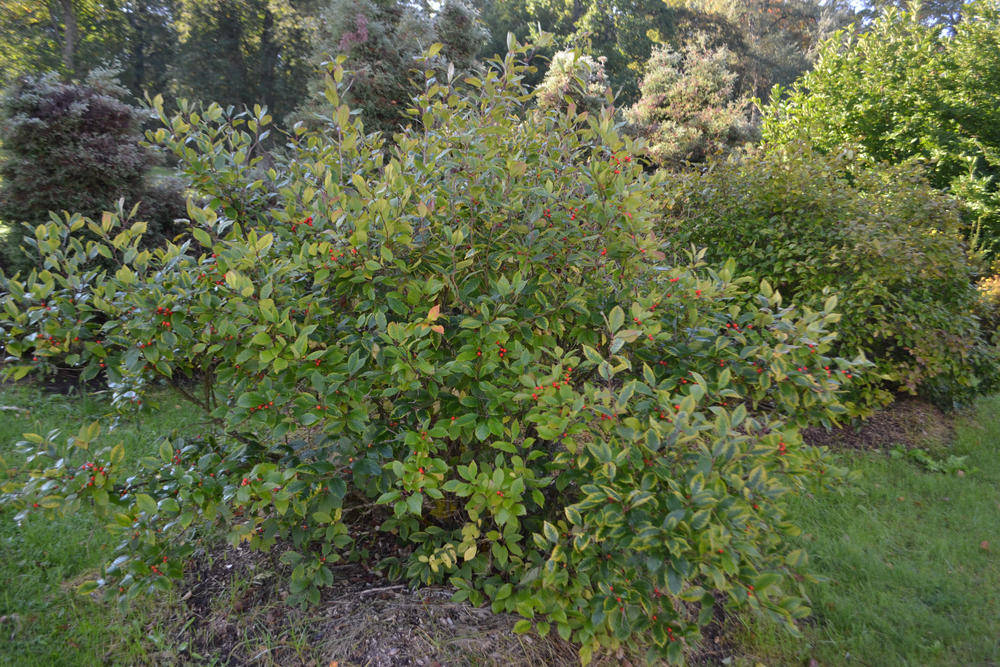
Winterberry is a deciduous holly shrub that thrives in moist, shaded gardens. Known for its vibrant red berries that persist throughout the winter, this shrub brings color and interest to your garden even when many plants are dormant. It is a low-maintenance plant that grows well in shaded, wet areas, making it an excellent choice for woodland or wetland gardens. Winterberry’s berries provide food for birds during the winter months, adding a functional benefit to its aesthetic appeal.
Winterberry has simple, dark green leaves that add texture and contrast to the shrub’s bright berries. It is perfect for creating seasonal interest in the garden, offering both visual appeal and wildlife benefits. Planting a male and female winterberry together will ensure berry production, making this shrub an essential part of any shaded garden with a focus on wildlife.
Coral Bells (Heuchera spp.)
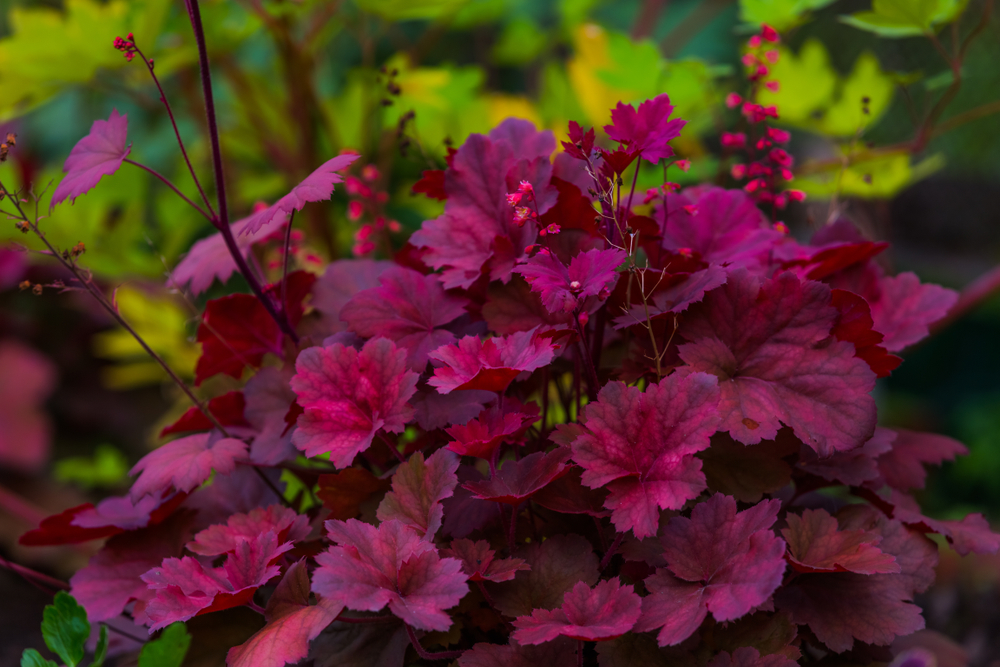
Coral Bells, also known as Heuchera, are low-growing, perennial shrubs that thrive in shaded gardens. Known for their vibrant foliage in hues of purple, silver, and red, these plants add a splash of color to shaded areas. Their delicate, bell-shaped flowers emerge in late spring to early summer, usually in shades of pink, white, or red, and are adored by hummingbirds and bees. These shrubs grow well in moist, well-drained soil and can tolerate a wide range of shade conditions, from partial to full shade.
In addition to their stunning foliage, Coral Bells are perfect for adding texture to your garden. They are relatively easy to maintain, requiring only minimal pruning to remove dead leaves and spent flowers. Whether used as a ground cover or in containers, Coral Bells are perfect for shaded spots where color and texture are needed without overwhelming the space.
Spiraea (Spiraea spp.)
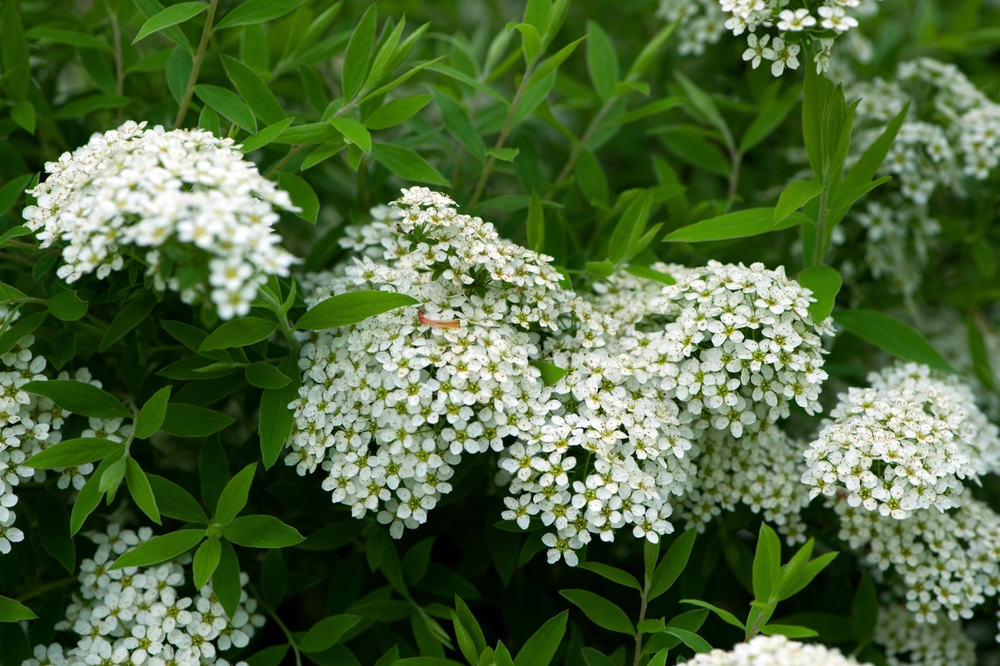
Spiraea is a hardy shrub that thrives in partial shade and can adapt to various soil types. Known for its clusters of white or pink flowers, Spiraea blooms in late spring to early summer, adding vibrant color to shaded gardens. Its delicate flowers stand out against the shrub’s dark green foliage, which turns golden or reddish in the fall, providing seasonal interest. Spiraea is perfect for borders or as a low hedge in shaded gardens, and its compact size makes it easy to integrate into smaller spaces.
This shrub is low-maintenance and resistant to pests, making it a great choice for gardeners looking for a reliable and attractive plant for shaded areas. Its versatility allows it to thrive in a wide range of garden settings, from formal to more naturalistic landscapes. Spiraea’s ability to tolerate both partial and full shade makes it a must-have for shaded gardens looking for consistent color and texture.
Skimmia (Skimmia japonica)
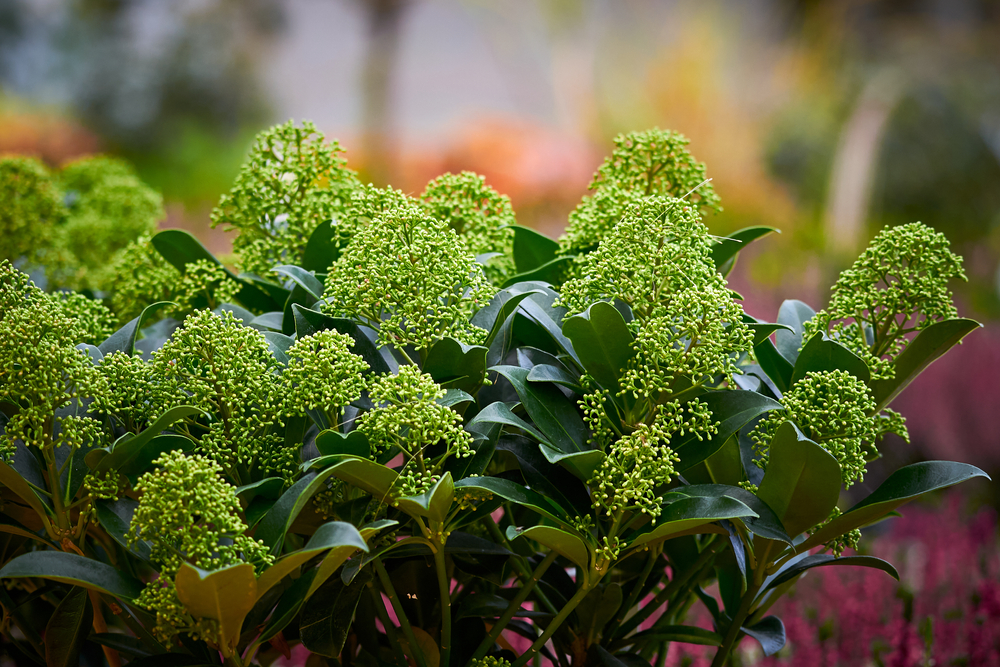
Skimmia is an evergreen shrub that excels in shady gardens, particularly those with acidic or well-drained soil. Known for its fragrant white or pink flowers that appear in spring, Skimmia is an excellent option for adding seasonal interest in shaded areas. Its glossy, dark green leaves provide structure year-round, while the small, fragrant blooms attract pollinators. After flowering, the plant produces red berries that remain on the plant through the winter months, offering color even when many other plants have gone dormant.
Skimmia works well as a foundation planting or in mixed borders, where its vibrant foliage and fragrant flowers stand out. It prefers partial to full shade, making it ideal for those shady spots under trees or in corners that do not receive direct sunlight. The ease of care and long-lasting visual appeal make it a popular choice for gardeners looking to add year-round interest to their shaded spaces.
Sweet Box (Sarcococca spp.)
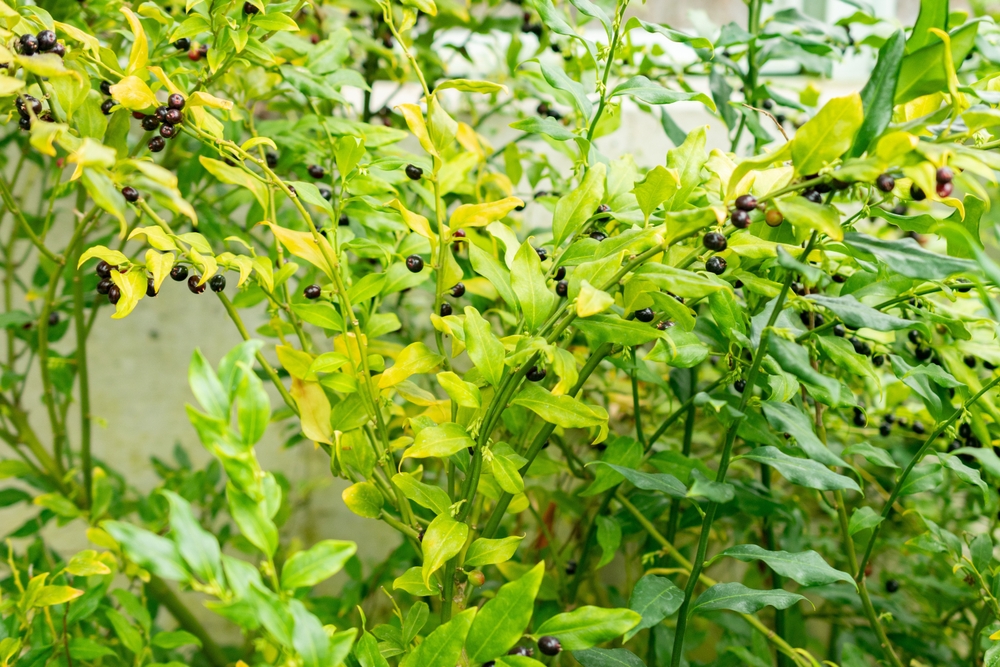
Sweet Box, or Sarcococca, is a fantastic evergreen shrub for shaded gardens. This plant is particularly known for its ability to thrive in deep shade, where many other plants may struggle. During the winter months, Sweet Box blooms with tiny, fragrant white flowers that attract pollinators. These flowers are followed by small black berries that add color in late winter or early spring. Its dark green foliage remains attractive throughout the year, making it an ideal choice for adding texture and greenery to shaded spots.
Sweet Box is a low-maintenance shrub that requires minimal care once established. It is perfect for planting near the base of trees or in areas where little light reaches, such as north-facing walls or woodland edges. Its compact size and slow growth make it easy to fit into a variety of garden designs, while its fragrant blooms provide a welcome burst of scent during the colder months.
This article originally appeared on Avocadu.
